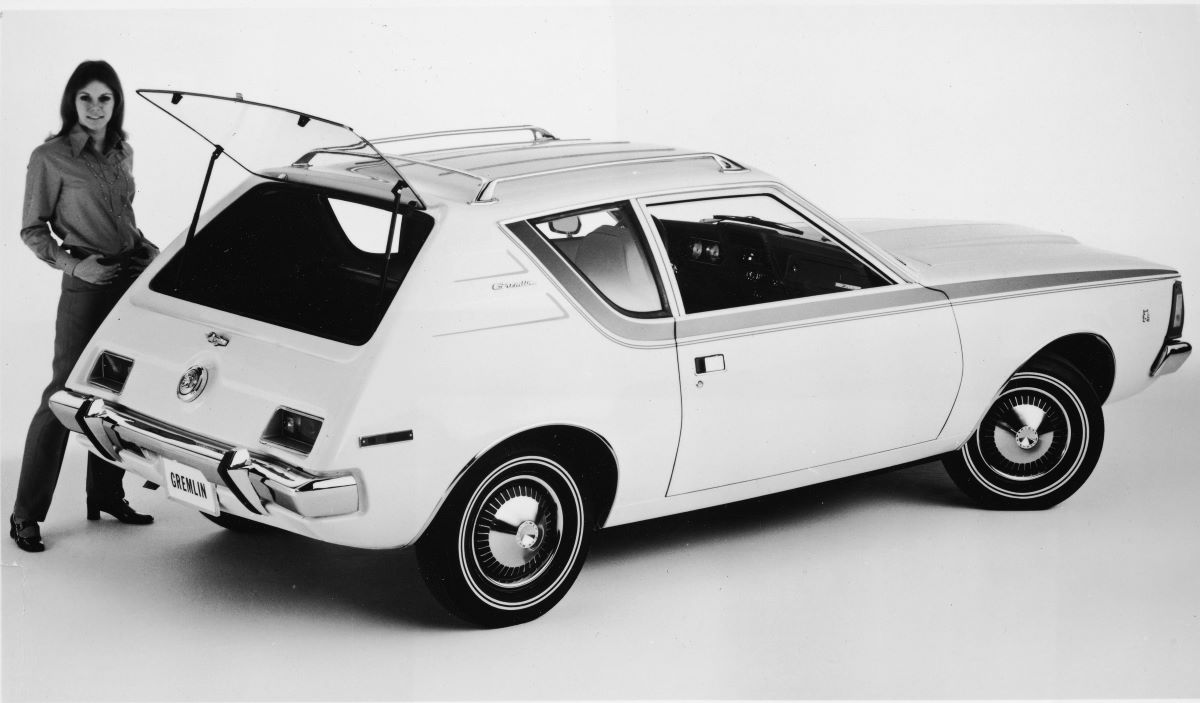Rarely do you find a vehicle as polarizing and iconic as the AMC Gremlin on the road. The Gremlin, produced between 1970 and 1978 in the United States, was one of the first budget subcompact vehicles produced by an American company. With styling that many considered so ugly it was cool, solid fuel economy, and an incredibly affordable price, the Gremlin offered something different that other American companies couldn’t produce at the time.
Unfortunately, the AMC Gremlin would eventually be redesigned and relaunched as the AMC Spirit in 1979 with a much softer design, losing much of its original character. Although the Gremlin was a failure in the public eye, the AMC Gremlin was a sales success for AMC due to how cheap these vehicles were to produce. Some of these successful sales can be traced back to the catastrophic failures seen with the Gremlin’s only domestic competition. Here’s everything you need to know about the AMC Gremlin and which two automotive mistakes helped contribute to the Gremlin’s success.
The AMC Gremlin was way ahead of its time

The AMC Gremlin was originally designed by Dick Teague, with the original Gremlin design sketched on an airline barf bag, according to The Great Funk by Thomas Hine. The Gremlin was to be produced as a short-bodied version of the Javelin with styling that stood out from the competition. The Gremlin was built as a subcompact vehicle, still carefully crafted and robustly built. The one-piece rear glass, which opened independently of the body, helped the Gremlin feel much more solidly built than the competition. Although the Gremlin may look like a hatchback, only the rear window was movable.
The Gremlin was cheap to produce and cheap for consumers, starting at just $1,879, which, adjusted for inflation, is only about $15,000 today. This made the Gremlin one of the cheapest cars you could buy that wasn’t a Volkswagen Beetle. According to MotorTrend, the Gremlin was also cheap to drive, thanks to its combined fuel economy numbers of about 21.7 mpg. This amount of fuel-saving capabilities was something never before seen in an American-produced car, especially one produced before the 1973 oil embargo.
The Gremlin found success thanks to the mistakes of its competitors
When the 1973 oil embargo hit the US with fuel shortages and gas prices rising to never before seen heights, the AMC Gremlin was a favorite for many due to its solid fuel economy and its availability in North American dealer lots. The Gremlin also had its fair share of luck with its competitors; the Chevy Vega and the Ford Pinto.
The Pinto had problems with combustion in the rear impact. According to the American Museum of Tort Law, rear-end collisions while driving the Pinto not only resulted in simple fires, but explosions because the rear gas tank was one of the first components of the Pinto to rupture in the impact While the Pinto continued to sell, Ford was forced to recall 1.5 million Pintos from 1971 to 1976.
On the other hand, the Chevy Vega wasn’t necessarily a dangerous subcompact to drive, and it sold well because of its Camaro look. However, with use, the Vega proved to be an unreliable car due to rusting of body panels after a few years of use and malfunctioning valve stem seals of the engine, which would quickly rot and cause engine oil to enter the Vega’s cylinders.
The AMC Gremlin was a hit, but not obvious
For the mainstream car market, the AMC Gremlin looked like a failure. It was an ugly car that ended up being discontinued, so the public thought it was a sales failure. However, the Gremlin was ultimately a huge success for AMC, helping AMC’s public image by producing a domestic subcompact that wasn’t plagued with dangerous recalls or premature rust issues.
With more than 600,000 Gremlins sold, this quirky car kept AMC afloat and led to the development of better American subcompact cars in the future.


